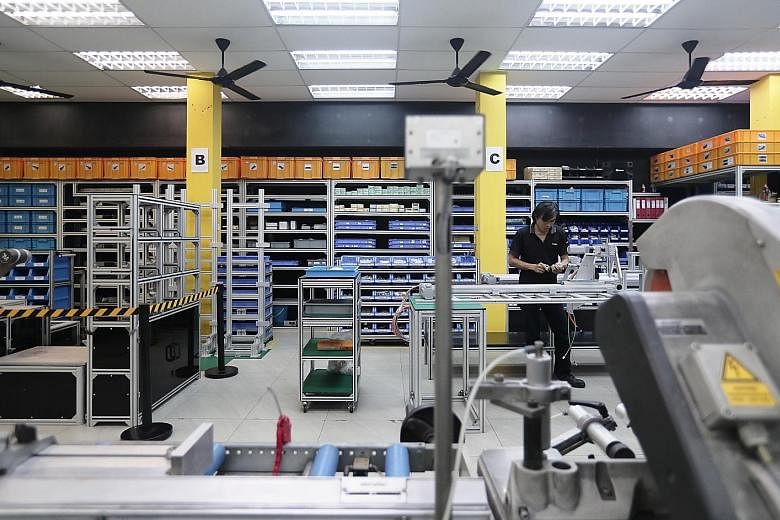Manufacturing grew at a slower pace last month on the back of a weaker job market, but the electronics sector stole the show by returning to expansionary mode after contracting for six straight months.
Last month's reading of the Purchasing Managers' Index (PMI) released yesterday came in at 50.1 points, down 0.1 point from July, when it rose by 1.2 points.
A PMI reading over 50 indicates expansion, while one below 50 shows contraction.
The electronics sector's PMI rose by 1.4 points to 50.6, the highest level since September 2018, when the reading was 51.4.
Electronics last exceeded the 50 threshold in January this year at 50.1, prior to the Covid-19 outbreak.
The January expansion was preceded by 14 months of contraction, mainly due to the United States-China trade war and the slowdown in the Chinese economy.
The manufacturing PMI in Singapore, which is in the midst of its worst recession since independence, has been on the mend since April, when the PMI dropped to 44.7 - the lowest level since November 2008 amid the global financial crisis. Gross domestic product (GDP) shrank by a record 13.2 per cent in the second quarter, with the manufacturing sector contracting 0.7 per cent year on year.
However, in the same quarter, non-oil domestic exports (Nodx) grew by 6.5 per cent.
United Overseas Bank economist Barnabas Gan said the modest second-quarter drop in manufacturing, relative to GDP, and the surge in Nodx suggested economic growth may have hit a floor and last month's PMI data backed that view.
"The expansions in both manufacturing and electronics PMIs signal that a recovery is taking place, and overall GDP is expected to improve relative to the contraction in the second quarter," he said.
The Singapore Institute of Purchasing and Materials Management (SIPMM), which compiles the monthly PMI report, said last month's manufacturing PMI was aided by more new orders and a faster rate of expansion in factory output.
The jump in electronics PMI was attributed to first-time expansion readings for new orders and factory output.
The electronics inventory index posted a faster rate of expansion but the sector's employment index posted a slower contraction, said SIPMM.
Ms Lee Ju Ye, economist at Maybank Kim Eng Securities, said electronics has outperformed other clusters in recent months, amid resilient demand for semiconductors for data centres and cloud services.
Ms Sophia Poh, SIPMM vice-president for industry engagement and development, said: "August PMI readings pointed to a silver lining in the electronics sector, which appeared to provide a needed boost for overall manufacturing."
However, the employment index for manufacturing PMI contracted at a faster rate from the previous month and contracted for the seventh month in a row.
Ms Selena Ling, OCBC Bank's head of treasury research and strategy, said the weak employment index reading indicates that the labour market recovery will continue to lag behind the overall economic recovery. She said her third-quarter GDP growth forecast stands at minus 7.1 per cent year on year.
UOB's Mr Gan expects full-year GDP to shrink by 5 per cent.


